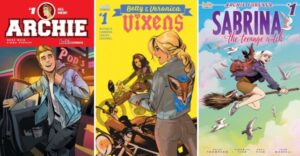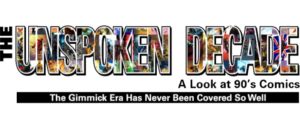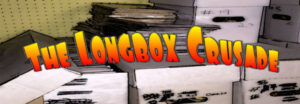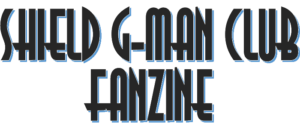MLJ – Subtle Flavors
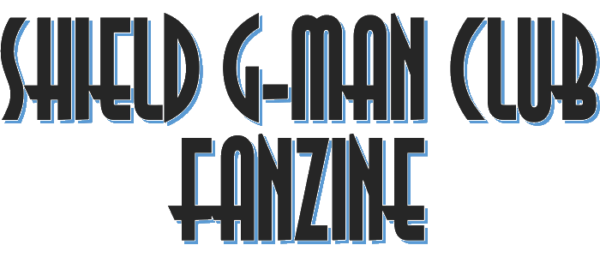
An Appreciation of the Non-Standard Hero Tree
by Joseph Kessler Adams
I was eight, living in the 1930s world of 1950s West Virginia. Life sucked.
A neighbor wanted to show me new comics. I had been following Popeye, Tarzan, Batman, and Superboy for a couple of years, so – sure. But he produced something that I had never seen before. It wasn’t anything I had known from Dell or DC, the only comic companies I could name t the time. was THE FLY #1.
I was eight – too young to remember Billy Batson and his magic word – Shazam! – to become a powerful man. Here was the story of little, abused orphan boy Tommy Troy who encountered a different magic mentor with huge eyes and a turban – Turan – who gave him a ring, like the ring of the genie from the Tales of Aladdin. And Turan also supplied him with it the magic words that would turn him into a powerful man. A super-powered man, with abilities that took this little boy to another world.
And I was ready to go.
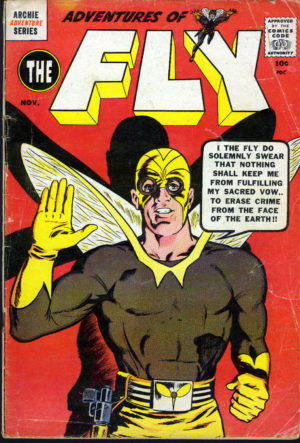 He had two more issues – and the last, with the red “Oath” cover – stayed with me. I devoured them in one afternoon. I went looking for more, but there were no more. I was infected with the joy of something different, something new, in my eight-year-old life.
He had two more issues – and the last, with the red “Oath” cover – stayed with me. I devoured them in one afternoon. I went looking for more, but there were no more. I was infected with the joy of something different, something new, in my eight-year-old life.
My family moved away and I lost touch with the friend with cool comics. I remembered that the comic had the unusual brand of “Archie Adventure” in the corner. I had seen Archie comics before, but could something as boring as “Archie’ give rise to something as cool as the Fly?
When I saw Challengers of the Unknown, I was ready. I had no idea it was the same team that had created The Fly – Simon, and Kirby. Who know comic creators had names in those days. But then I saw the Flash, who was clearly not Batman or Superman, and I was addicted. Green Lantern in Showcase – I was on it. Star Hawkins the space detective with his robot secretary Ilda, or the trips to the Space Museum in my cousin’s Strange Adventures comics … I was there.
My family moved again, this time to Los Angeles and in a little mom and pop neighborhood store halfway between home and school, I found a comic rack. In that rack, I found a strange cover – with the Archie Adventure in the corner. It was a guy wearing a vague, American flag costume under his drab army browns. I was not impressed by the cover (I still think it was George Tuska), but the first page was that spectacular introduction to Lancelot Strong – The Shield.
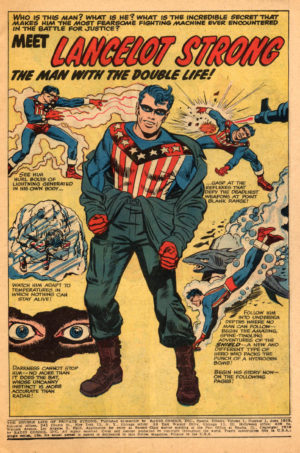 I didn’t know there had been a Shield before him. I didn’t care. Here was the same feeling I had when I read those first issues of The Fly. Again, I didn’t know who Simon & Kirby were so I couldn’t appreciate the coincidence. But this time it was a hero who not only had muscles and strength, but cold generate electricity with his flexed muscles – so how much cooler could he possibly need.
I didn’t know there had been a Shield before him. I didn’t care. Here was the same feeling I had when I read those first issues of The Fly. Again, I didn’t know who Simon & Kirby were so I couldn’t appreciate the coincidence. But this time it was a hero who not only had muscles and strength, but cold generate electricity with his flexed muscles – so how much cooler could he possibly need.
And there were more issues of The Fly, but the art had changed and wasn’t as dynamic to me. But my first exposure to Tommy Troy and then Lancelot Strong made me want something than the mainstream flavors that DC gushed – I had developed a taste for the gourmet flavor of small press and niche heroes. I had broken out of the normal American comic diet.
Within months of discovering The Shield, the Silver Age of comics exploded upon me. The Justice League of America combined four characters I already knew (Superman, Batman, Flash, and Green Lantern) with some I had seen but did not care about – the Martian Manhunter, Aquaman and Wonder Women (girls still had cooties, then). Hawkman fought a dragon from the entrance of a traffic tunnel and the Atomic Knights saved America after the atomic war of far-off 1992 and the Star Rovers got it wrong in farther off outer space (which I had not yet discovered). My love of the Fly was sullied by inferior artwork, and Lancelot Strong was gone.
Marvel began spewing Superheroes like bullets from a great hero-gun and I was swamped by spandex and mutants. But When another Archie Adventure comic hit the stands, I snapped it up. The Jaguar was the first fresh of breath air from the same-old miasma super- and science fiction-heroes had become.
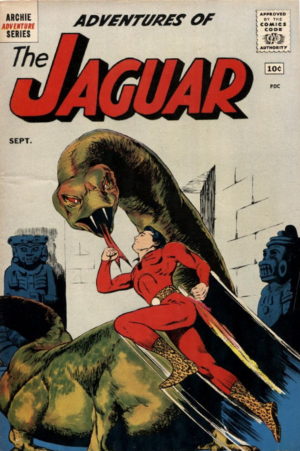 And later, on the Jaguar letter page (I think it was Issue 8) introduced a fan-drawn cover for a new group, the Anti-Crime Squad on the letter page with The Fly, The Shield, The Black Hood, Fly Girl, and The Jaguar – a precursor to the Mighty Crusaders. But the seed was planted.
And later, on the Jaguar letter page (I think it was Issue 8) introduced a fan-drawn cover for a new group, the Anti-Crime Squad on the letter page with The Fly, The Shield, The Black Hood, Fly Girl, and The Jaguar – a precursor to the Mighty Crusaders. But the seed was planted.
Around this time I found another unique flavor. Fanzines. A friend introduced me to Rocket’s Blast/Comicollecor, Star Studded Comics #6 and Alter Ego #4 on the same afternoon. They were also different from the Marvel DC burgers and fries flavors. These were tacos and dim sum in a world of fried chicken. Nothing wrong with fried chicken but – tacos!
And Alter Ego #4 had an article that struck me. “MLJ Leads The Way,” the story of the 1940s comic characters that were the original source for what would be the Archie line – would be te source for Archie, himself. I learned about the original Shield and other characters who ran with him. Hangman, Mr. Justice, The Black Hood (I remembered seeing The Black Hood in a few panels of The Fly and on the cover of the Anti-Crime Squad). Almost immediately I got a copy of Star Studded Comics #7 and realized they were copying the graphics from Jackpot Comics.
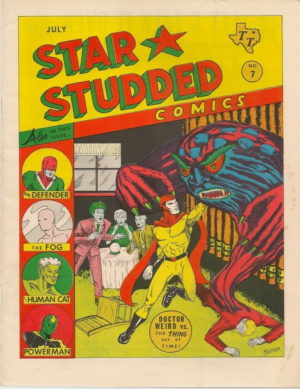 I almost lost it. The flavors I loved came from somewhere. And in the early 1960s, a few bookstores (which had already become my home away from home) offered back issue comics – 5¢ for the DC and Marvel, but a few dollars for the twenty-year-old originals. In those days the 1940s were as close as the Y2K Bug is to us. My dad paid $3 for my first Golden Age comic (Comic Cavalcade #17) and ranted for weeks about paying $3 for a 10¢ comic.
I almost lost it. The flavors I loved came from somewhere. And in the early 1960s, a few bookstores (which had already become my home away from home) offered back issue comics – 5¢ for the DC and Marvel, but a few dollars for the twenty-year-old originals. In those days the 1940s were as close as the Y2K Bug is to us. My dad paid $3 for my first Golden Age comic (Comic Cavalcade #17) and ranted for weeks about paying $3 for a 10¢ comic.
But the flood gate was open and I found one store that sold old Shadow and Amazing pulps for 25¢ and old MLJs for 50¢. I was on the bus a lot and was usually curled up in one of the back seats with one of these treasures, learning to savor the smell of musty old newsprint as I read.
 Pep Comics became my favorites, including the issue that introduced Archie. But Jackpot was the first cover I actually had seen – on the back cover of Alter Ego #4 in a tiny black and white photograph. I had them full size, in full, smelly, color! There seemed to be a bit more meat on the bones of these character than for many of the pointless Superman wannabes hosted by (literally) dozens of publishers.
Pep Comics became my favorites, including the issue that introduced Archie. But Jackpot was the first cover I actually had seen – on the back cover of Alter Ego #4 in a tiny black and white photograph. I had them full size, in full, smelly, color! There seemed to be a bit more meat on the bones of these character than for many of the pointless Superman wannabes hosted by (literally) dozens of publishers.
The stories for MLJ were straight out of radio adventure series or movie serial chapters, and the art was a cut above. Irv Novick, who later did a lot of war comics for DC, was the prime mover and shaker for The Shield. And a young Japanese-American Artist, Fujitake – working as “Fuji” – made an impression on me during those long bus rides. I just like his stylized anatomy and extreme facial expression for his run on The Hangman. And he seemed to have a thing for lynching people, which was, unfortunately, appropriate for the title character.
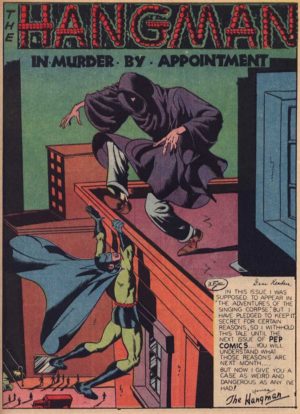 Personal taste, but I liked him.
Personal taste, but I liked him.
When Batman hit the small screen there was hope from comic book fans, followed by the massive disappointment of watching the actual show. Our heroes were mythologized and trivialized. They were discounted and held up for ridicule and mass marketing. I should be grateful because the success of that show with the general public encouraged Richard Goldwater, the publisher of what was then Archie Comics, to dip his corporate toes back into the hero world.
The Archie Adventure trademark was revived for The Shadow. The first issue could be argued to be the same character as inhabited the classic pulp magazines I had read (I had yet to discover the old radio recordings), but almost immediately he was given a pointless green and blue spandex outfit and treated like a failed Batman clone. And fail he did – the Shadow vanished from the Archie Adventure line-up. As did the Archie Adventure logo.
There was a shred of readership for The Fly after years of watered-down tastes. The Jaguar was gone, but because of the television show, The Fly was rechristened Fly-Man, Fly-Girl remained the same, but the old MLJ roster was raided. The Comet returned but with a silly rainbow helmet and no explanation for his powers. The Black Hood was resurrected with a robot horse (why?). The Shield skipped over the Simon & Kirby reinvention from 1960 in favor of the 1940s version, but no explanation for a 20-year absence (at least Captain American had been frozen in ice). Archie Adventure Comics vanished in favor of “Mighty Comics” and the name of the publisher became Radio Comics, even though Goldwater remained publisher for both Radio and Archie lines.
They were weak. The artist who was hired to do most of the art – Paul Reinman – had been an artist in the original Golden Age, but never and “A” list talent. Joe Schuster, the co-creator of Superman, was tapped to write because his name would garner some press and he would work cheap (the settlement for co-creator status and royalties was still years away and he had to feed a family). Mike Sekowsky, who was the neutral flavor artist who had brought the very different styles of the DC characters together for a Justice League style that didn’t favor anyone’s original art style, was brought in for far too little work. A couple of other artists were brought in, but the tiny sliver of time inhabited by “Mighty” comics was mercifully short.
A whole roster of the old MLJ characters appeared but they were only differentiated with trivial attempts at personalities (like The Web’s sad, hen-pecked existence, which the young male readers that were the primary audience could not identify with, but apparently the old creators could). There were differences in costumes but no real changes of language or trademarks to identify them. And they could not attract – or hold – an audience of 1960s teenaged readers.
It was enough to plant seeds.
Richard Buckler, a fanzine editor doing his own heroes in Intrigue and Superhero ditto zines (drawing mostly on Jack Kirby lifts to populate his trips and drawing from a few other fanzine talents to fill out his own zines). He was diligent, studied and became a journeyman comic artist in his own right. In a story not clear to me, but somehow Richard convinced Goldwater to enter the superhero comic field again, probably by suggesting there was money being made in the Silver Age of Comics (Goldwater was always a businessman).
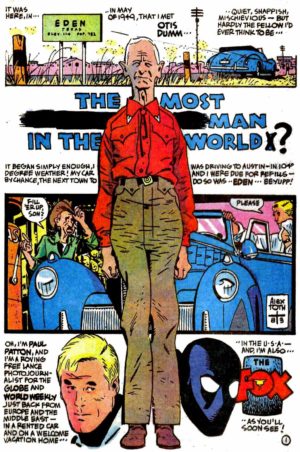 The Red Circle Comics line was created and Rich became the editor – I think he was the editor. Under his direction, The Shield, The Fly, The Jaguar, the Mighty Crusaders, and more of the old MLJ characters were given a new chance. Steel Sterling, The Fox, Mr. Justice and more began to appear in revived MLJ titles. The Mighty Crusaders, the names whereof which was held firmly by Goldwater, were given a new life.
The Red Circle Comics line was created and Rich became the editor – I think he was the editor. Under his direction, The Shield, The Fly, The Jaguar, the Mighty Crusaders, and more of the old MLJ characters were given a new chance. Steel Sterling, The Fox, Mr. Justice and more began to appear in revived MLJ titles. The Mighty Crusaders, the names whereof which was held firmly by Goldwater, were given a new life.
Some serious talent was attracted, including the legendary designer for most of the Hanna Barbera superhero cartoon lines – Alex Toth. Toth was an established talent with comic books and his version of The Fox was probably the high watermark of the Red Circle effort.
Rich Buckler deserves credit for getting the project on the newsstands and his vision lasted longer than the Simon & Kirby reboot, and those were big shoes to fill.
Red Circle was a short-lived but encouraging project. The flavor of the MLJ characters returned. And it would return in many forms for years. For me, it was different chefs of varying talents trying to present the new meal they knew was possible. When you can’t get a real mama’s kitchen taco, Taco Bell will hold you for a while.
DC got the license to do the characters and created the new Impact comics line. Some young gun decided to make them more modern but lost the flavor. The Web stopped being an individual, if failed husband, and became an organization. The Jaguar got a sex change. The Fly and Fly-Girl were redesigned. Shield, Black Hood, and Steel Sterling all got rethinks. Mr. Justice was a more Spectre-like creepy character.
All good efforts, but not really what the market was looking for.
The inner eight-year-old who had been infected by the bright red cover of the Fly #3 was pleased to see the intense, if ineffectual, attempt being made. There was talent in the kitchen and, given time, they might even get it right. Eventually.
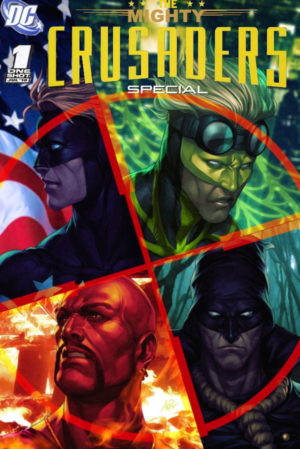 There was one more Attempt for the Impact line – the Next Generation approach where an aging Steel Sterling tried to recruit the children of the previous generation of heroes.
There was one more Attempt for the Impact line – the Next Generation approach where an aging Steel Sterling tried to recruit the children of the previous generation of heroes.
It could not find its footing.
Once more into the breach for the DC license with another generation of readers and a new line with the same, now familiar, characters. Good artists, possibly the best on the whole DC run. But again, it failed to find its audience.
Of all the attempts to bring the characters back to life, I have to say I think the newest, Dark Circle line, have made the best transition. For an old man (I’m closing in on 70… just a few months to go) I’m pleased to see the kids get a feel for these characters as individuals, with solid design, competent art, and more interesting stories.
It is a small line of titles, there are changes I may not agree with (like this time it is the Shield who has changed genders) but the teams seem to be committed to turning in a good comic experience for both old farts and the young audience for whom the flavors are all new.
And it smells like coming home for Thanksgiving.

